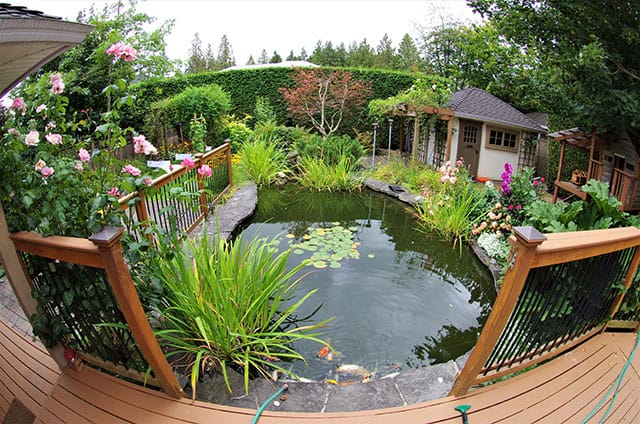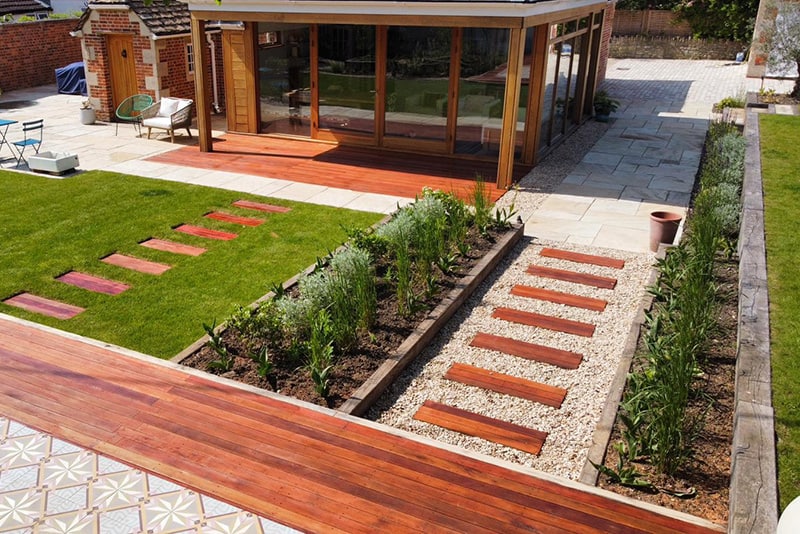
Top Tips on Planning the Perfect Garden Pond
More and more households are recognising the benefits of making a pond an integral feature of their garden. Not only do they add a lot of visual interest, but they also help make your whole outdoor space more sustainable.
Here Compass Garden and Landscape Design, who are highly experienced in contemporary garden design in Wiltshire and across the south west of England, look at some of the key factors to consider if you are thinking of installing a pond as part of a garden refresh.
Putting it In the Right Place
Ponds make excellent focal points for your garden, but you can’t just build one right in the centre of whatever space you have. You should avoid putting it too close to any trees, as there is a danger that cutting the roots could adversely affect its long-term growth. Equally, if you leave the roots untouched, there is also a risk they could break through the lining of the pond.
If you want to put aquatic plants in the water, then you should ensure that these get enough sunlight; don’t put your pond in a shady spot. Ideally, you should locate the pond so it can be seen and enjoyed from the house as well as the garden as you won’t want to spend so much time outdoors in the winter. Also, try to design it so that it blends in with the rest of the garden, rather than sticking out like a sore thumb.
What Do You Want from It?
Many people opt for a garden pond because they like the idea of being soothed by the sound of running water. If you go down this route, then you need to think about the electrics as you will need a supply to keep the water pumping through.
Other gardeners opt for a pond for ‘green’ reasons. Water features can attract and nurture many different forms of wildlife, including birds, frogs and dragonflies as well as fish. Your garden will become a much more vibrant place if the pond is designed with these considerations in mind. It’s a good idea to have a shallow slope with a layer of stones on one side as this will help aquatic creatures get in and out of the water.
To Plant or Not to Plant
You don’t need to plant anything at all, and let nature take its course; the variety of species you get will depend on the general location, and how close your feature is to other ponds.
If you’d like to give nature a helping hand, you have a number of options. Species like the water iris that poke up out of the water will help the lifecycle of insects such as dragonflies and damselflies. Tadpoles and other larvae will benefit if you plant oxygenating species such as hornwort underwater. Floating plants such as water lilies will provide somewhere for pondlife to rest on, as well as stop the water from getting too hot in summer. Pollinator-friendly marginal plants, such as the flowering rush and march marigold, will attract bees and hoverflies in the warmer months.
As part of our planting consultancy service, which is also available to clients across the South West, we can advise you on which plants will look good and thrive all around your garden, including in the areas of water features.
Safety First
If you have young children, then you need to guard against the possibility of them falling in. As well as ensuring that the pond is visible from the house, you should consider a number of safety features, including:
- Installing a fence with a lockable gate around the outside.
- Growing plants around the deeper areas of the pond.
- Having a gently sloping edge so that they can always climb out if they fall in.
Finding the Right Fish
If you don’t have any hungry cats or dogs, then populating your pond with fish will provide you with a relatively low-maintenance pet. As well as feeding them, you will again need an electrical supply to the pond, to keep the oxygen levels up and to filter out any fish waste.
But, what type should you buy? If you have species which swim near the surface, then you’ll be able see them more easily; but they will also be more vulnerable to cats and other predators. Equally, camouflaged fish are more likely to survive, but they won’t be as easily visible. Popular choices include goldfish, gold orfes, sturgeon and koi carp.
However, keep in mind that all fishes can be vulnerable to sudden temperature changes, and sudden warming also encourages green algal growth – so the bigger your pond is the better.
Compass Garden and Landscape Design
If you are looking to revitalise or reshape your garden, then Compass Garden and Landscape Design can help. We can advise clients on where the best place to put a pond or water feature is, and source a reputable local contractor to carry out the work for you.
We will produce a range of initial sketches before a full design, so you have an excellent idea of what the final feature will look like. If you would like to know more, follow this link and fill in the online form or call us on either 07920 051549 or 07920 051549.








